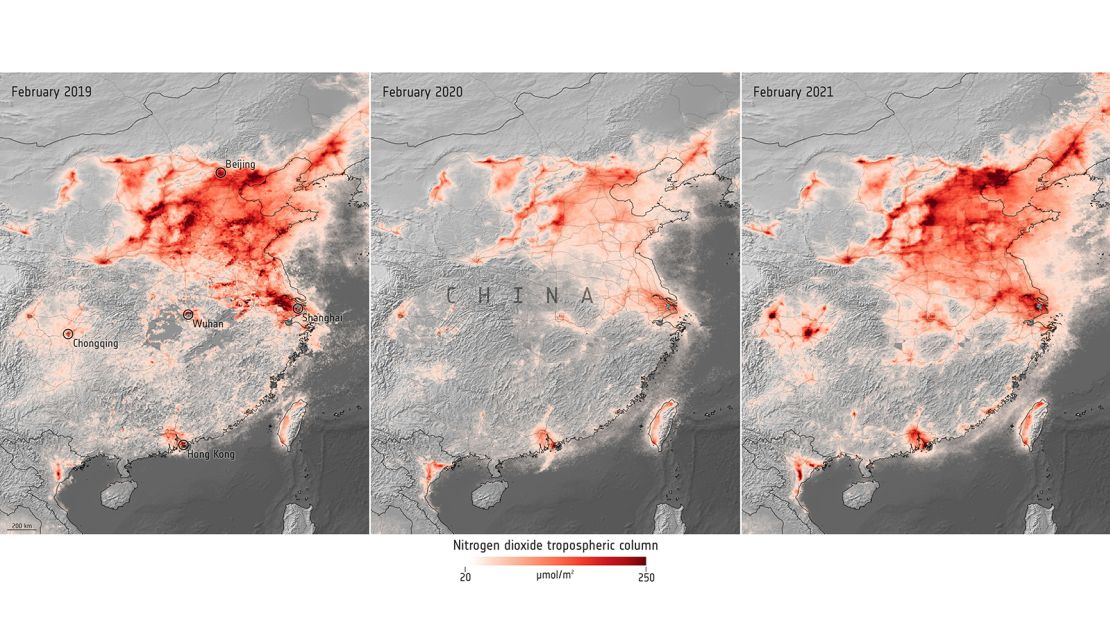After a decline due to the Covid-19 lockdowns, air pollution levels are bouncing back to their pre-pandemic numbers, according to an analysis of satellite imagery.
As restrictions loosen in some countries and residents return to regular activities, levels of nitrogen dioxide, an air pollutant caused most commonly by emissions from cars, are returning to their previous levels, the European Space Agency reported on Monday.
The ESA used images from China as an example, given the country had a “significant reduction in air pollutants” last year.
“Now, more than one year later, as restrictions have eased, the average level of air pollutants has rebounded and is on the rise again,” the ESA said.

Between February 2019 and February 2020, Beijing’s nitrogen dioxide concentrations dropped 35%, the ESA said. In Chongqing, the drop was by 45%. As of February 2021, though, Beijing has returned to similar levels, while Chongqing has almost doubled its pre-Covid-19 numbers, the ESA said.
“We expected air pollution to rebound as lockdowns are lifted across the globe,” said Claus Zehner, ESA’s Copernicus Sentinel-5P mission manager, in a statement. “Nitrogen dioxide concentrations in our atmosphere do not depend on human activity alone. Weather conditions such as wind speed and cloud cover also affect those levels, however a large quantity of these reductions are due to restrictions being eased. In the coming weeks and months, we expect increases of nitrogen dioxide concentrations also over Europe.”
A similar trend is possible in the US.
In March 2020, satellite images showed less nitrogen dioxide in the air over the country, particularly in areas on the West Coast that went under lockdown early.
Marshall Burke, an assistant professor at Stanford’s Department of Earth System Science, said at the time that the better air quality could have saved between 50,000 and 75,000 people from dying prematurely.
CNN’s Madeline Holcombe and Sean O’Key contributed to this report.



